Results 6,561 to 6,570 of 12091
Thread: Anandtech News
-
12-27-16, 11:07 PM #6561
Anandtech: Lenovo Updates The ThinkPad Lineup: New Models, Welcome Changes
Today Lenovo is announcing a refresh of most of its ThinkPad lineup, and although the model numbers have only changed a bit, there are some very welcome changes to the lineup as well. Since most of the lineup is just being refreshed, we’ll go over what’s new on a holistic level.
Lenovo’s ThinkPad lineup is one of the most well known lineup of laptops around. They’ve been the business focused lineup in Lenovo’s laptop arsenal for some time, and the ThinkPad is a staple in many businesses and enterprises. For 2017, Lenovo has done a gentle retouch of most of the product lineup, brining about some new technology and other changes.
The first big announcement is that Lenovo is launching Intel Optane caching drives on select ThinkPad models. We’ve followed the development of this new non-volatile storage solution for some time, and please check out the full write-up on this announcement of shipping 3D XPoint here. Due to the small storage capacity, these initial Optane M.2 drives will be used for HDD caching on several ThinkPad models, including the ThinkPad T470p, L470, L570, T470, and T570.
Lenovo is also switching to the Microsoft Precision TouchPad drivers, for a more consistent experience across devices. This is certainly a welcome change, and it’s great to see more companies leverage this. Precision TouchPad is continuously being updated by Microsoft as well. The software side is only half of the story of course, but it’s a big part of the experience.
Still on the software side, Lenovo is also switching the entire ThinkPad lineup for 2017 to a Windows 10 Signature Edition image. This is excellent news not only for the home user, who won’t have to deal with gratuitous software which was not always needed or welcome, but for business users this should allow for faster deployment as well, since a custom image may not be required at all. After some of the news stories over the last couple of years, it is excellent to see a company shipping Signature Edition images right out of the box for an entire product lineup, and we can only hope this expands to the rest of Lenovo’s laptops.
On the hardware front, other than Optane, Lenovo is making a big push for USB-C and especially Thunderbolt 3. With the addition of this port, Lenovo is able to offer some new accessories to provide an easier docking solution than the traditional docking station.
ThinkPads have shipped with fingerprint readers for some time, and Lenovo is also supplementing the T470 and T570 with Windows Hello cameras, for facial recognition. This doesn’t replace the fingerprint, but gives another option for end users.
Possibly the most interesting news of all is that Lenovo is going to be offering some ThinkPad models in a new silver color, alongside the traditional matte black. Although this could be blasphemy to some, the new color looks great in the images provided, and hopefully we’ll be able to get some hands-on time with them at CES and see how it looks in person.
ThinkPad Yoga 370
As far as new models, Lenovo is launching the ThinkPad Yoga 370, which is a 13.3-inch FHD version of their ThinkPad Yoga lineup, which previously consisted of the 12.5-inch Yoga 260 and 14-inch Yoga 460. The ThinkPad Yoga 370 offers an integrated pen which docks inside the laptop, as well as Thunderbolt 3, and it will be offered in black or silver with availability in March 2017, starting from $1264.
ThinkPad T470
The T470 is one of the new models to feature an optional Intel Optane 16 GB cache drive, and it also will have a touch fingerprint reader and Windows Hello camera option. Thunderbolt 3 is also here on the 14-inch laptop, along with a GeForce 940MX GPU and up to 32 GB of DDR4. It continues to feature the split battery, with a 23 Wh in the front and a removable 48 Wh or 73 Wh battery in the rear. It will be available in February starting at $914
ThinkPad T570
The 15.6-inch T series is similar to the T470 in that it will offer Thunderbolt 3, fingerprint, IR camera, and Intel Optane caching, and it also keeps the dGPU with the GeForce 940MX, but the larger model can also be had with a UHD display (3840x2160) in addition to the standard FHD (1920x1080) version. It will be available in March starting at $909.
ThinkPad T470s
The ThinkPad T470s continues to get slimmer and lighter. What was once a slightly lighter T series is now a 14-inch notebook that is under three pounds, with the latest version just 2.9 lbs. It can be had with up to 24 GB of memory, with 8 GB soldered on and a single DIMM available for another 16 GB. It still features Ethernet, along with Thunderbolt 3 and up to 1 TB of PCIe SSD. The thinner T series is also available in silver, with availability in February starting at $1099.
ThinkPad T470p
The p model is for performance, with 45-Watt CPUs instead of the U series found in the slimmer and lighter notebooks. This is combined with the GeForce 940MX, and up to 32 GB of DDR4. The T470p is also available with the 16 GB Intel Optane caching drive, and split batteries with up to 12 hours of battery life with the larger 72 Wh battery in the rear. The T470p will be available in March starting at $1049.
ThinkPad 13
The ThinkPad 13 is Lenovo’s value offering, and it will be available in January for a starting price of $674. For less than $700, it will feature Intel Kaby Lake processors, with up to 32 GB of DDR4 with 2 DIMM slots, and up to 512 GB of PCIe storage. The display is a FHD 1920x1080 touch version, and it features 3 USB 3.0 ports, USB-C which doubles as a charging port, dTPM 2.0, and a SD card reader. It’s 19.1mm thick and weighs 3.17 lbs. It will also be offered in black or silver.
ThinkPad L470
The L series is positioned as the mainstream business value lineup, and they slot in for a bit less money than the T series. The L470 is a 14-inch FHD IPS model, and it also features optional Intel Optane caching, and 2 DIMMS for up to 32 GB of RAM. It keeps the split batteries as well, offering up to 95.5 Wh of battery capacity. In addition, it adds a discrete GPU in the Radeon R5 M430. It will be available in March starting from $799.
ThinkPad L570
This 15.6-inch laptop is quite a bit different than the similarly named L470, in that it doesn’t have the split battery, or discrete graphics. It has a single 48 Wh battery, along with optional Intel Optane caching or SSD drives. The base model is a 1366x768 TN display, so be careful, although there is a FHD IPS offering as well. It features a dedicated number pad and optical drive, and it can be had with up to 32 GB of DDR4 with the 2 DIMM slots, and will be available in March starting at $809.
ThinkPad X270
This 12.5-inch ThinkPad has been around for quite a while now, and the latest version adds USB-C for power, display, and data. RAM options are 4 to 16 GB of DDR4, and storage is up to 2 TB of HDD or 512 GB PCIe SSD. It offers the ThinkPad split battery with 23 Wh in the front and 48 or 72 Wh in the rear. With the largest battery, Lenovo claims up to 21.4 hours of battery life. It comes in at 2.9 lbs, with availability in March from $909
Gallery: ThinkPad Refresh 2017





More...
-
12-28-16, 12:37 AM #6562
Anandtech: Kaby Lake Systems With Intel Optane SSDs Coming Soon
Lenovo's announcement today of a new generation of ThinkPads based on Intel's Kaby Lake platform includes brief but tantalizing mention of Optane, Intel's brand for devices using the 3D XPoint non-volatile memory technology they co-developed with Micron. Lenovo's new ThinkPads and competing high-end Kaby Lake systems will likely be the first appearance of 3D XPoint memory in the consumer PC market.
Several of Lenovo's newly announced ThinkPads will offer 16GB Optane SSDs in M.2 2242 form factor paired with hard drives as an alternative to a using a single NVMe SSD with NAND flash memory (usually TLC NAND, with a portion used as SLC cache). The new Intel Optane devices mentioned by Lenovo are most likely the codenamed Stony Beach NVMe PCIe 3 x2 drives that were featured in roadmap leaked back in July. More recent leaks have indicated that these will be branded as the Intel Optane Memory 8000p series, with a 32GB capacity in addition to the 16GB Lenovo will be using. Since Intel's 3D XPoint memory is being manufactured as a two-layer 128Gb (16GB) die, these Optane products will require just one or two dies and will have no trouble fitting on to a short M.2 2242 card alongside a controller chip.
The new generation of ThinkPads will be hitting the market in January and February 2017, but Lenovo and Intel haven't indicated when the configurations with Optane will be available. Other sources in the industry are telling us that Optane is still suffering from delays, so while we hope to see a working demo at CES, the Optane-equipped notebooks may not actually launch until much later in the year. We also expect the bulk of the initial supply of 3D XPoint memory to go to the enterprise market, just like virtually all of Intel and Micron's 3D MLC NAND output has been used for enterprise SSDs so far.
Support for Intel Optane branded devices based on 3D XPoint memory technology has long been bandied about as a new feature of the Kaby Lake generation of CPUs and chipsets, but Intel has not officially clarified what that means. The plan of record has always been for the first Optane products to be NVMe SSDs, but NVMe is already thoroughly supported by current platforms and software. Because Optane SSDs will have a significantly higher price per GB than NAND flash based SSDs, the natural role for Optane SSDs is to act as a small cache device for larger and slower storage devices. The "Optane support" that Kaby Lake brings is almost certainly just the addition of the ability to use NVMe SSDs (including Optane SSDs) as cache devices.
At a high level, using Optane SSDs as a cache for hard drives is no different from the SSD caching Intel first introduced in 2011 with the Z68 chipset for Sandy Bridge processors and the Intel Rapid Storage Technology (RST) driver version 10.5. Branded by Intel as Smart Response Technology (SRT), their SSD caching implementation built on the existing RAID capabilities of RST to use a SSD as a block-level cache of a hard drive, operating as a write-back or write-through cache depending on the user's preference. For SATA devices, no hardware features were required but booting from RST RAID or cache volumes requires support in the motherboard firmware, and Intel's drivers have used RAID and SRT SSD caching to provide product segmentation between different chipsets.
With the release of Skylake processors and the 100-series chipsets, Intel brought support for NVMe RAID to RST version 15. This was not as straightforward to implement as RAID and SRT for SATA drives, owing to the fact that the SATA drives in a RST RAID or SRT volume are all conveniently connected through Intel's own SATA controller and managed by the same driver. NVMe SSDs by contrast each connect to the system through general-purpose PCIe lanes and can use either the operating system's NVMe driver or a driver provided by the SSD manufacturer. In order to bring NVMe devices under the purview of Intel's RST driver, 100-series chipsets have an unusual trick: when the SATA controller is put in RAID mode instead of plain AHCI mode, NVMe devices that are connected to the PCH have their PCI registers re-mapped to appear within the AHCI controller's register space and the NVMe devices are no longer detectable as PCIe devices in their own right. This makes the NVMe SSDs inaccessible to any driver other than Intel's RST. Intel has provided very little public documentation of this feature and its operation is usually very poorly described by the UEFI configuration interfaces on supporting machines. This has caused quite a few tech support headaches for machines that enable this feature by default as it is seldom obvious how to put the machine back into a mode where standard NVMe drivers can be used. Worse, some machines such as the Lenovo Yoga 900 and IdeaPad 710 shipped with the chipset locked in RAID mode despite only having a single SSD. After public outcry from would-be Linux users, Lenovo released firmware updates that added the option of using the standard AHCI mode that leaves NVMe devices alone.
In spite of the limitations and rough edges, Intel's solution does ensure reliable operation in RAID mode, free of interference from third-party drivers. It's certainly less work than the alternative of writing a more general-purpose software RAID and caching system for Windows that can handle a variety of underlying drivers. It also lays the groundwork for adding support for NVMe cache devices to Intel's SRT caching system. Intel's SRT already has caching algorithms tuned for 16GB to 64GB caches in front of hard drives, so now that they have a solution for mediating access to NVMe SSDs it is simple to enable using both features simultaneously. The changes do need to be added to both the RST driver and to the motherboard firmware if booting from a cached volume is to be supported. Backporting and deploying the firmware changes to Skylake motherboards should be possible but is unlikely to happen.
In the years since Intel introduced SRT caching, another form of tiered storage has taken over: TLC NAND SSDs with SLC caching. NAND flash suffers from write times that are much longer than read times, and storing multiple bits per cell requires multiple passes of writes. To alleviate this, most TLC NAND-based SSDs for client PC usage treat a portion of their flash as SLC, storing just one bit per cell instead of three. This SLC is used as a cache to absorb bursts of writes, which are consolidated into TLC NAND when the drive is idle (or when the SLC cache fills up). Even TLC NAND has reasonably high read performance, so there is little need to use SLC to cache read operations. By contrast, Intel's Smart Response Technology has to cache access to hard drives, where both read and write latencies are painfully high. This means SRT has to balance keeping frequently-read data in the cache against making room for a burst of writes. Having a lot of static data hanging around on the cache device will cause significant write amplification to result from any wear leveling, but SRT already reduces the write load by having sequential writes bypass the cache. Taking into account that 3D XPoint memory can handle millions of write operations per cell, even a small 16GB cache device should have no trouble with endurance.
More...
-
12-28-16, 09:12 AM #6563
Anandtech: The GIGABYTE Z170X-Ultra Gaming & Z170X-Designare Motherboard Review
In this review we are having a look at GIGABYTE's Z170X-Ultra Gaming and Z170X-Designare, motherboards that were designed with a way of bringing U.2 support to the market. The two motherboards share many similarities, yet also several important differences, which we will examine and compare to other products currently available in the market.
More...
-
12-28-16, 05:22 PM #6564
Anandtech: South Korea Fines Qualcomm $865 Million for Anti-Trust Violations
Word comes out of South Korea today that the country’s antitrust regulatory authority, the Korean Fair Trade Commission (KFTC), has ruled against Qualcomm in an ongoing antitrust investigation and is fining the company $865 million. The product of a 3 year investigation, the KFTC has ruled that Qualcomm abused their market position with respect to how and to whom they licensed out access to various important cellular patents, refusing to license certain patents and unnecessarily bundling others.
This latest fine from South Korea comes as Qualcomm has been in the hot-seat with various nations’ regulators over the past couple of years, all of whom has been investigating Qualcomm for similar reasons. This includes China, who fined Qualcomm $975 million and imposed new licensing rules on the company back in February of 2015, and the EU, who still has their own antitrust investigation open. At the core of both cases has been how Qualcomm has handled and licensed its patent portfolio, and at times how this intersected with how the company sold & priced their own chips implementing those patents.
South Korea’s ruling marks the second time Qualcomm has been fined by a national regulator for anticompetitive actions in the past couple of years, and is the second time altogether that the country has fined Qualcomm (they were also fined in 2009 in a dispute over CDMA; the appeal is still pending). Similar to last year’s case in China, the crux of the issue in the KFTC’s ruling appears to have been Qualcomm’s bundling of patents for chip customers, which the KTFC has ruled forced customers to license patents they did not need. Meanwhile the KFTC is also taking Qualcomm to task over their unwillingness to license standards-essential cellular technology patents to rivals, which restricted their ability to compete with Qualcomm. As it would not be possible to build standards-compliant modems without infringing on those patents, competing products would be open to lawsuits from Qualcomm.
Along with the $865 million fine, the KFTC is also ordering Qualcomm to change their business practices to put an end to their illegal behavior. This includes ending patent bundling and renegotiating patent licensing deals with customers if requested, and to properly negotiate the licensing of patents with rivals on a good faith basis.
In a response to the KFTC’s ruling, Qualcomm has released their own statement, stating that they disagree with KFTC’s ruling on the grounds that it violates international trade agreements, that no harm has been done to the market, and that the KFTC did not question Qualcomm’s licensing model in their previous CDMA investigation. Qualcomm has also said that once the formal written order from the KFTC comes out – a process that can take months – they will immediately appeal the order and the fine. Meanwhile it’s worth noting that this is the first such case where Qualcomm is appealing the ruling; in the China ruling, Qualcomm entered into an agreement with Chinese regulators to accept the fine and new patent licensing rules in order to end the investigation.
More...
-
12-30-16, 08:14 AM #6565
Anandtech: Sharkoon Launches Rapid-Case USB 3.1 Type-C Storage Device DIY Kit
Sharkoon has introduced a DIY kit that lets users build their own external storage devices with the USB 3.1 Type-C interface. The kit is not expensive and resembles similar devices from other makers: it contains an enclosure for a drive as well as a USB 3.1 Type-C cable. The key element here is Type-C, although as with many devices of a similar nature, the 10 Gbps is limited by the chipset to 8 Gbps, and then further by the SATA protocol.
The Sharkoon Rapid-Case 2.5” USB 3.1 Type-C is a sleek enclosure (132×80×14 mm) made of black or silver brushed aluminum that can house a 2.5”/9.5 mm storage device and has a USB 3.1 Type-C header. The chassis weighs 83 grams and when populated with an HDD, its weight will increase to something like 170 ~ 230 grams depending on the drive used. The only thing that owners need to do to use the device is to install an appropriate pre-formatted HDD or SSD inside.
The chassis contains ASMedia’s ASM1142 PCIe-to-USB 3.1 Gen 2 bridge as well as ASMedia’s ASM1351 USB-to-SATA bridge. The ASM1142 is a PCIe 3.0 x1 chip supporting a maximum bandwidth of up to 8 Gbps, which is below 10 Gbps specified by the USB 3.1 Gen 2 standard, but since this chip is used on loads of USB 3.1 Gen 2-supporting motherboards, this is not really a limitation for the Sharkoon Rapid-Case. Meanwhile, the USB-to-SATA bridge not only downs physical bandwidth to 6 Gbps, but it further reduces it by the overhead introduced by SATAS’s 8b/10b encoding. In the end, even if the Sharkoon Rapid-Case is populated by a high-end SSD, performance of the latter will be limited by SATA, not USB 3.1 Gen 2. In fact, this is the case with a lot of USB 3.1 Type-C storage devices: while they formally support 10 Gbps data rate, they use SATA drives inside with a maximum throughput of 6 Gbps (which is still higher than what you get from USB 3.0-supporting devices at 5 Gbps).
Despite the fact that right now not a lot of external storage devices (factory-made or DIY) can take advantage of USB 3.1 Gen 2’s 10 Gbps data rate, it is important that such devices make it to the market in general. Nowadays many new PCs feature USB Type-C ports and it is important to build up an ecosystem of devices with this interface. Furthermore, if you need a lot of storage space, you are going to use a 2.5" HDD that has a maximum media to host transfer rate of less than ~200 MB/s and thus not requiring even 5 Gbps of USB 3.0.
The Sharkoon Rapid-Case 2.5" USB 3.1 Type-C is available from select retailers in Europe for the suggested retail price of €24.99.
Gallery: Sharkoon Launches Rapid-Case USB 3.1 Type-C Storage Device DIY Kit





Related Reading:
- Plextor Launches EX1 USB-C External SSD: Up to 550 MBps, 512 GB and LDPC
- G-Technology G-DRIVE slim SSD USB-C 500GB External SSD Capsule Review
- SanDisk Unveils New Generation of USB Type-C Flash Drives
- Samsung Portable SSD T3 Review
More...
-
12-30-16, 10:24 AM #6566
Anandtech: PNY Launches CS2030 SSDs: Phison PS5007-E7, MLC NAND, 2.8 GB/s
PNY has introduced its new CS2030 lineup of higher-end SSDs designed for desktops and laptops with M.2-2280 slots. The new drives are based on Phison’s PS5007-E7 controller for PCIe 3.0 x4 SSDs as well as Toshiba’s MLC NAND memory made using 15 nm process technology. The PNY CS2030 are already available in 240 GB and 480 GB configurations.
Like many other companies, PNY does not develop SSDs from the ground up, but uses Phison’s turnkey platforms featuring Toshiba’s NAND flash memory to build its drives, which is why it is not surprising that the PNY CS2030 has a lot in common with other products powered by the PS5007-E7 controller in terms of capabilities (NVMe L1.2 power saving mode, 120-bit/2KB BCH code, end-to-end data path protection, advanced global wear-leveling, etc.). Meanwhile, this does not mean that PNY cannot differentiate from the others by tweaking firmware (or just buying an appropriate firmware from Phison). Apparently, the company opted to lower sequential reads and writes compared to some of the direct rivals (2800 MB/s vs 3000 MB/s, 1550 MB/s vs 2400 MB/s) in a bid to improve random write performance of the PNY CS2030 (up to a rated 300K IOPS).
PNY’s CS2030 family currently consists of 240 GB and 480 GB drives because such capacities are the most popular among customers today. Nonetheless, the company has demonstrated pictures of boxes for 120 GB versions of the CS2030 SSDs, which may indicate that the company is either finalizing the specs of the drives, or plans to sell them exclusively to OEM customers (and/or in certain regions only). As for performance, the PNY CS2030 480 GB has rated sequential read speed of up to 2800 MB/s and sequential write performance of up to 1500 MB/s. The same model of the drive can perform up to 300K random read IOPS (input/output operations per second) as well as 270K random write IOPS. Meanwhile the 240 GB version is rated slightly slower than the top-of-the-range model (see the table for details).
At present, PNY sells its CS2030 in 240 GB and 480 GB configurations for $179.99 and $329.99, respectively, which is in line with prices of some other Phison E7-based SSDs. All PNY’s SSDs come with a three-year warranty.PNY CS2030 Series Specifications M280CS2030-120-RB M280CS2030-240-RB M280CS2030-480-RB Capacities 120 GB 240 GB 480 GB Form Factor M.2-2280 Interface PCIe 3.0 x4 (NVMe 1.2) Controller Phison PS5007-E7 NAND Toshiba's 128 Gb MLC
15 nm process technologyDRAM 128 MB (?) 256 MB (?) 512 MB (?) Sequential Read unknown 2750 MB/s 2800 MB/s Sequential Write unknown 1500 MB/s 1550 MB/s Random Read (4 KB) IOPS unknown 201K 300K Random Write (4 KB) IOPS unknown 215K 270K Power DEVSLP 4 mW (?) Operating 5 ~ 7 W (?) MTBG 2 million hours Encryption AES-256 is supported by the controller.
Current status of support by the PNY CS2030 is unknown.Warranty Three years Price unknown $179.99 $329.99
Gallery: PNY Launches CS2030 SSDs: Phison PS5007-E7, MLC NAND, 2.7 GB/s





Related Reading:
- The PNY CS1311 and CS2211 SSD Review: MLC vs TLC at 15nm
- Corsair Releases Force MP500 SSDs: 3 GB/s, Phison PS5007-E7, MLC NAND
- ZOTAC Announces SONIX PCIe SSD Price & Availability
- Patriot Memory Enters PCIe Storage Market with Hellfire SSDs
More...
-
12-30-16, 11:06 AM #6567
Anandtech: Thermaltake Adds RGB Lighting to Toughpower Grand Gold PSUs
Thermaltake has introduced a new lineup of high-end PSUs featuring RGB lighting. The new Toughpower Grand RGB Gold power supplies are equipped with 256 colors 'Riing' RGB fan, featuring five lighting modes as well as all the regular attributes of advanced PSUs, including a modular design, flat black cables, a "smart" fan, as well as a 10-year warranty.
The Thermaltake Toughpower Grand RGB Gold lineup of PSUs are compliant with the ATX 12V v2.4 and EPS v2.92 specifications, carry the 80 Plus Gold spec badge and are designed for full-size desktops/workstations (in fact, the 850 W model even has two 4+4 CPU power connectors and thus can handle dual-socket systems). Like other high-end PSUs, the Toughpower Grand RGB Gold power supplies feature a modular design, Rubycon capacitors (rated for 105°C/221°F), a high amperage single +12V rail design (see the table for details) as well as a 140 mm fan that can shut itself down completely when the load is below 20% (it is possible to keep the fan on at all other times). Thermaltake also indicated that the PSUs feature a very strict voltage regulation circuitry (set for no more than a ±2% variation) with a very low 30 mV ripple noise.
One of the key selling points of the Toughpower Grand RGB Gold is its Riing 14 RGB fan with a hydraulic bearing as well as multiple LEDs that can work in five modes: 256-color RGB cycle, solid red, solid green, solid blue or solid white. The modes can be set using a single button and then the PSU will remember them even after a shutdown.Thermaltake Toughpower Grand RGB Gold Series Output Specifications TPG-650AH3FSG-R TPG-750AH3FSG-R TPG-850AH3FSG-R Rated Combined Rated Combined Rated Combined +3.3V 22 A 120 22 A 120 W 22 A 120 W +5V +12V 54.2 A 650 W 62.5 A 750 W 70.9 A 850 W -12V 0.3 A 3.6 W 0.3 A 3.6 W 0.3 A 3.6 W +5Vsb 3 A 15 W 3 A 15 W 3 A 15 W Total Power 650 W 750 W 850 W
As for connectivity, the Thermaltake Toughpower Grand RGB Gold PSUs come with four or six 6+2-pin PCIe power plugs for graphics cards (so, the 850 W model can handle three AMD Radeon R9 Fury graphics cards or two highly-custom EVGA Kingpin GPUs that need three power connectors), 9 or 12 SATA power connectors, Molex connectors and 4-pin plugs for floppy drives and other peripherals such as fan controllers. All cables are flat and black.
The Thermaltake Toughpower Grand RGB Gold series PSUs are already available from multiple retailers, including Amazon. The top-of-the-range model costs $119, whereas the 650 W and 750 W PSUs cost $89 and $99, respectively. Apart from the Toughpower Grand RGB Gold lineup, Thermaltake is also working on more affordable Smart Pro RGB Bronze PSUs, which are expected to hit the market in 2017. The Smart Pro RGB Bronze PSUs will feature the same RGB fan as the Toughpower Grand RGB, modular design and premium components, but the Bronze rating and a seven-year warranty.Thermaltake Toughpower Grand RGB Gold Series Connector type 650 W
TPG-0650F-R750 W
TPG-0750F-R850 W
TPG-0850F-RATX 24 Pin 1 EPS 4+4 Pin 1 2 PCIe 6+2 Pin 4 6 SATA 9 12 4P Molex 4 Floppy 1
Gallery: Thermaltake Adds RGB Lighting to 650 W, 750W and 850 W Toughpower Grand Gold PSUs





Related Reading:
- Thermaltake Releases New SFX PSUs: 450W and 600W, rated at 80 PLUS Gold
- Best PC Power Supplies: Holiday 2016
- The Zalman ZM1200-EBT 1200W Power Supply Review
- NZXT Unveils Fully Customizable Aer RGB LED Fans
More...
-
12-30-16, 01:19 PM #6568
Anandtech: Oculus VR Acquires The Eye Tribe, Developer of Eye Tracking Technologies
It has been announced that Oculus VR as bought The Eye Tribe, a company known for its eye tracking hardware and software technologies, earlier in December. Facebook’s VR division does not say how it plans to use the acquired company, but the two primary reasons for the takeover could be The Eye Tribe’s gaze tracking IP along with the company’s experience with foveated rendering. Theoretically, the buyout may indicate that foveated rendering could become an important feature of the upcoming VR platforms.
The Eye Tribe was established in 2011 with the aim to develop software and hardware technologies for eye tracking. By 2013, the company introduced its eye-tracking device for PCs and tablets that cost only $99 along with an SDK to develop software for the product. The company actually started shipping the units to developers in 2014, but the devices have never been integrated into actual tablets or computers shipped to end-users. Eventually, the company designed eye tracking technologies for smartphones and earlier this year demonstrated an eye tracking tech for VR headsets.
Eye tracking itself could enable a more intuitive control for virtual reality interactions when combined with gestures, voice and other methods. However, this might not be the only reason why Oculus VR was interested in The Eye Tribe. Usage of gaze tracking also enables developers to use foveated rendering, which allows optimizing the use of GPU horsepower. The method is relatively simple on paper: each scene is rendered first in low resolution and with the least amount of polygons and then the specific part of the screen where the user is currently looking at is rendered in high resolution. Developers may play with such effects like depth of field, blur and antialiasing to further optimize performance and/or improve quality, but all of those tricks require gaze tracking.
The foveated rendering technique is already supported in Unity3D engine and is enabled by the Tobii EyeX tracking device. According to the developers, usage of the tech helped to improve performance of a laptop from 11 FPS to 42 FPS. Microsoft and NVIDIA are also researching foveated rendering and the latter has even come up with new ideas on the matter. The company says that foveated rendering per se is not a panacea for VR (at the end of the day, you can improve performance of any platform by using foveated rendering with gaze tracking) because rendering in lower resolution for peripheral vision results in flickering if the foveation is too aggressive, meanwhile blur itself reduces contrast and introduces a sense of tunnel vision. NVIDIA has a number of suggestions how to minimize negative effects of foveated rendering (e.g., by introducing contrast preservation), but currently this is a research project.
For VR applications, foveated rendering makes sense, especially if we are dealing with a headset based on a smartphone that has a limited amount of GPU horsepower. To enable it, Oculus VR needed gaze tracking IP and a team that understands how things work here. This does not mean that foveated rendering will be a part of Oculus VR’s next-gen VR headset because its current form requires some additional work. However, with eye tracking IP and appropriate team, Oculus VR could implement the technology in the future.
Related Reading:
- The Khronos Group Announces New Standards Collaboration for VR Integration
- Oculus Touch Controllers Shipping In December for $199
- IFA 2016: Qualcomm Announces VR820 Reference Platform, QCA9379
- HTC Vive Launch Day News & First Impressions
- Oculus Rift Launch Day News: New AMD & NVIDIA Drivers; Async Timewarp & Platform Restrictions Added To SDK
More...
-
12-30-16, 02:28 PM #6569
Anandtech: ZOTAC Announces GeForce GTX 1080 for Mini-ITX PCs
ZOTAC has introduced its GeForce GTX 1080 Mini, the industry’s first video card for Mini-ITX systems running the GP104 GPU in its full configuration. The new graphics adapter will be compatible with miniature computers with proper cooling and will be the most powerful card for SFF PCs until something better emerges.
The ZOTAC GeForce GTX 1080 Mini (ZT-P10800H-10P) offers the same performance and connectivity as its larger brethren: it is based on the fully-fledged GP104 graphics processor (with 2560 stream processors, 160 texture units and 64 raster operations pipes) that works at 1620/1759 MHz (base/boost) frequencies and is equipped with 8 GB of GDDR5X memory featuring 10 Gbps and 320 GB/s of bandwidth. In fact, the GPU frequencies of ZOTAC’s GeForce GTX 1080 Mini are slightly higher when compared to those of NVIDIA’s reference cards which is worth mentioning. The board alo features three DisplayPort 1.4 connectors, an HDMI 2.0b port as well as one dual-link DVI header, which is exactly what NVIDIA’s reference cards carry.
To squeeze a GeForce GTX 1080 GPU into Mini-ITX form-factor, ZOTAC had to develop a brand-new PCB with compatible with GDDR5X memory (so, the PCB is different from ZOTAC’s GeForce GTX 1070 Mini launched earlier this year). It is unknown whether the manufacturer decided to go with NVIDIA’s 5+1-phase VRM for the GTX 1080, or altered the VRM design somehow, but the card has one 8-pin PCIe power plug as well as two SLI-HB connectors, just like other boards in its class.
Since the GeForce GTX 1080 consumes up to 180 W of power, ZOTAC also had to design a relatively small cooling system for the ZT-P10800H-10P board. The company came up with a cooler that uses an aluminum radiator with at least three thick (and long) copper heatpipes as well as two fans. In addition, the GeForce GTX 1080 Mini card has a backplate, which has positive and sometimes negative effects. The cooling system seems to be a little longer than the one used on the ZOTAC GeForce GTX 1070 Mini, but the whole graphics adapter is barely longer than 17 cm (6.7”) specified by the Mini-ITX spec. In any case, the majority of builds designed for gamers have a few cm of extra space inside and the length is not going to become a problem.
ZOTAC plans to display its GeForce GTX 1080 Mini at CES and start its sales in 2017. The company did not announce exact pricing and ETA, but since this is a unique custom-designed product, it will likely be priced higher than NVIDIA’s reference designs.Specifications of GeForce GTX 1070/1080 for Mini-ITX PCs ZOTAC
GeForce GTX 1080 MiniZOTAC GeForce GTX 1070 Mini GIGABYTE GeForce GTX 1070 Mini ITX OC (OC Mode) GIGABYTE GeForce GTX 1070 Mini ITX (Gaming Mode)NVIDIA
GeForce GTX 1080
Founders EditionNVIDIA
GeForce GTX 1070
Founders EditionStream Processors 2560 1920 2560 1920 Texture Units 160 120 160 120 ROPs 64 64 Core Clock (MHz) 1620 1518 1556 1531 1607 1506 Boost Clock (MHz) 1759 1708 1746 1721 1733 1683 Memory Capacity 8 GB 8 GB Type GDDR5X GDDR5 GDDR5X GDDR5 Clock 10 Gbps 8 Gbps 10 Gbps 8 Gbps TDP 180 W 150 W 180 W 150 W Launch Date Q1-2017 12/2016 7/2016 5/2016 6/2016 Launch Price ? $395 ? $699 $449
Gallery: ZOTAC Announces GeForce GTX 1080 for Mini-ITX PCs





Related Reading:
- ZOTAC Launches GeForce GTX 1070 Mini for Mini-ITX PCs
- GIGABYTE Announces GeForce GTX 1070 Mini ITX OC
- Lian Li PC-Q37 Announced: Two-Stage Mini-ITX Chassis with Tempered Glass
- The NZXT Manta mITX Case Review
- The Fractal Design Node 202 Case Review: Mini-ITX Gaming For the Living Room
- Corsair's Bulldog PC Barebone for the Living Room is now Available: $299/$399
- The ASUS Maximus VIII Impact Z170 ROG Mini-ITX Motherboard Review
More...
-
12-30-16, 03:01 PM #6570
Anandtech: MSI Cubi 2 Kaby Lake UCFF PC Review
The Kaby Lake-U (KBL-U)series with 15W TDP CPUs was introduced along with the 4.5W Kaby Lake-Y ones in Q3 2014. The first set of products with Kaby Lake-U were ultrabooks. However, ultra-compact form-factor (UCFF) PCs were not long behind. There are already three vendors in the market with Kaby Lake UCFF PCs - ASRock (Beebox-S), GIGABYTE (BRIX), and MSI (Cubi 2). MSI was the first to launch KBL-U UCFF PCs in the North American market. Read on for our evaluation of the Cubi2-005B and how it compares against UCFF PCs from the last couple of generations.
More...
Thread Information
Users Browsing this Thread
There are currently 21 users browsing this thread. (0 members and 21 guests)






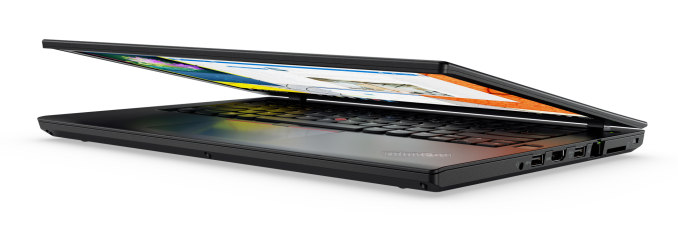
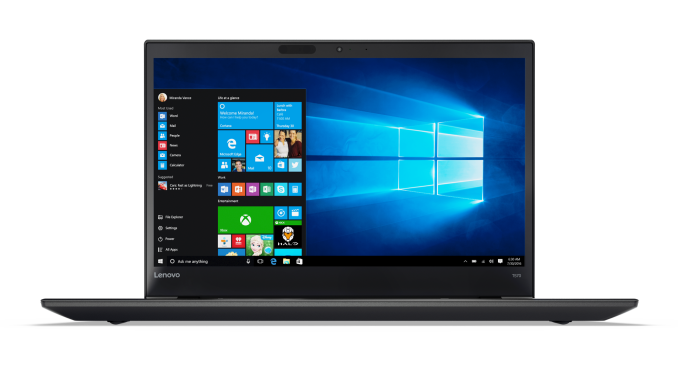

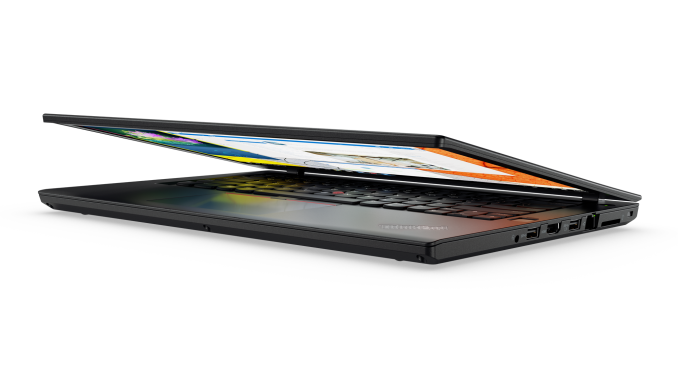
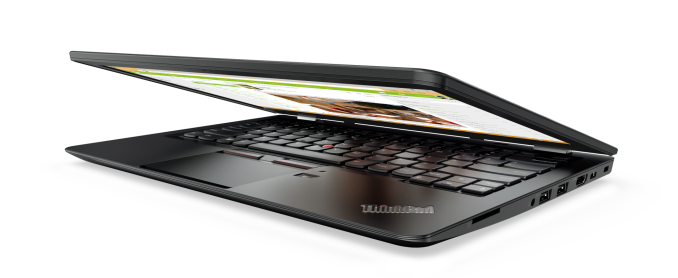
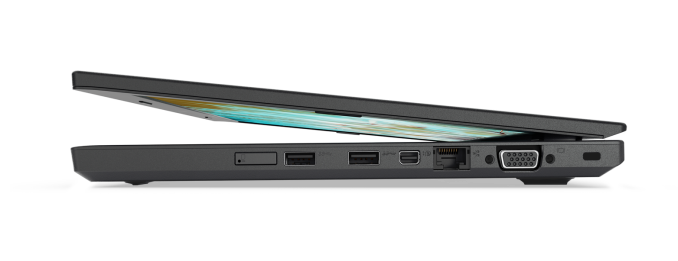
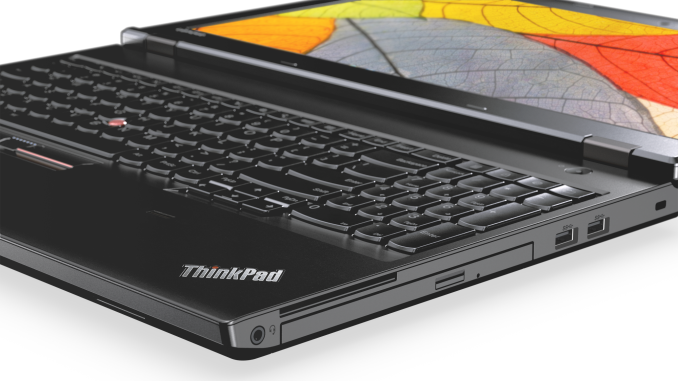
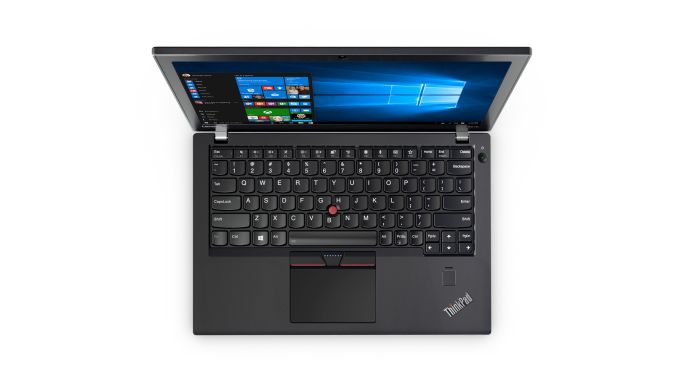

 Quote
Quote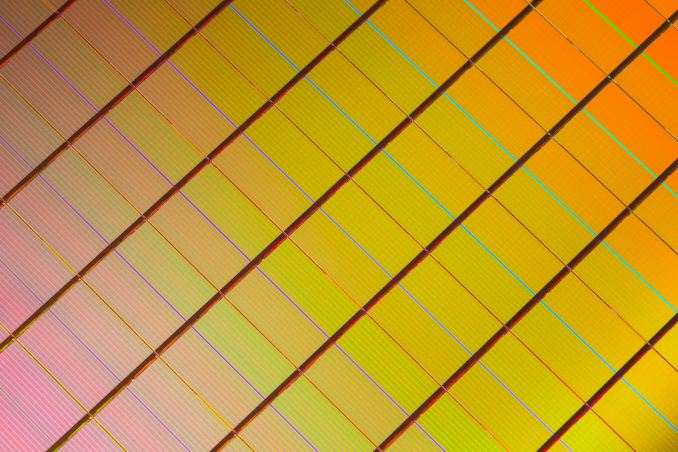
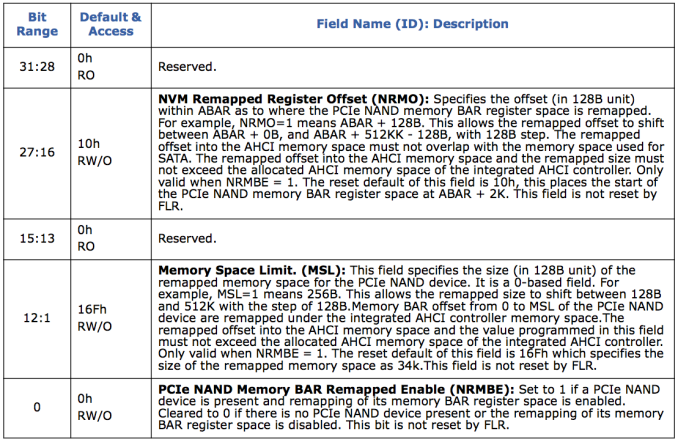
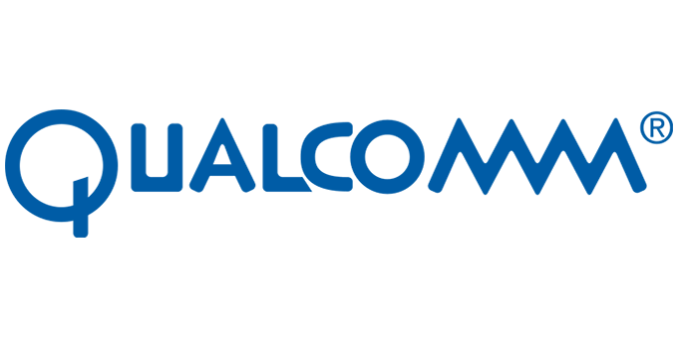
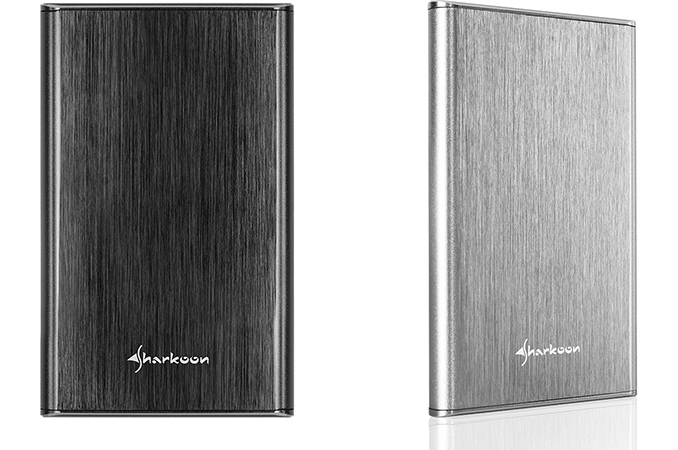
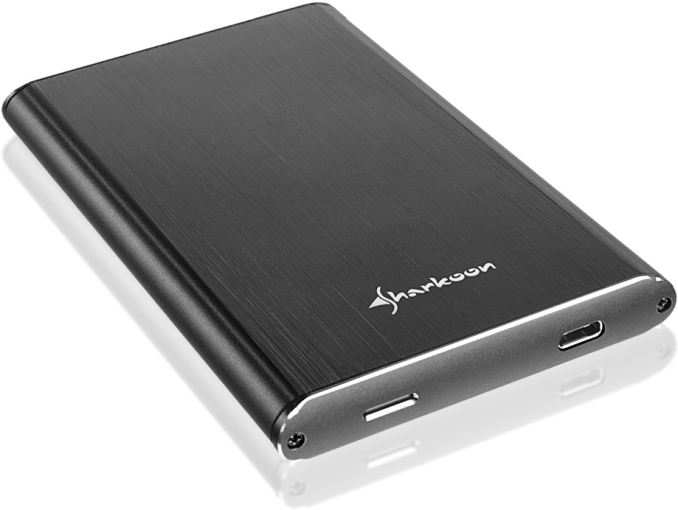
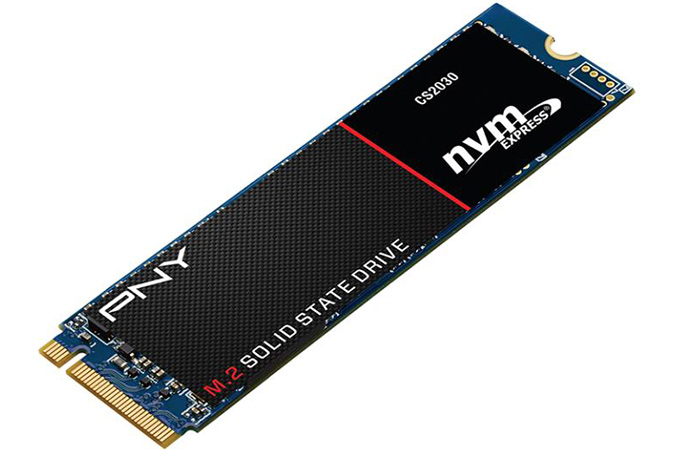

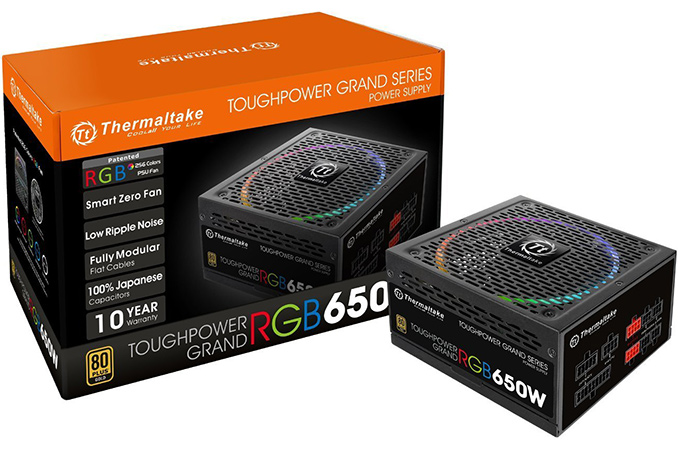


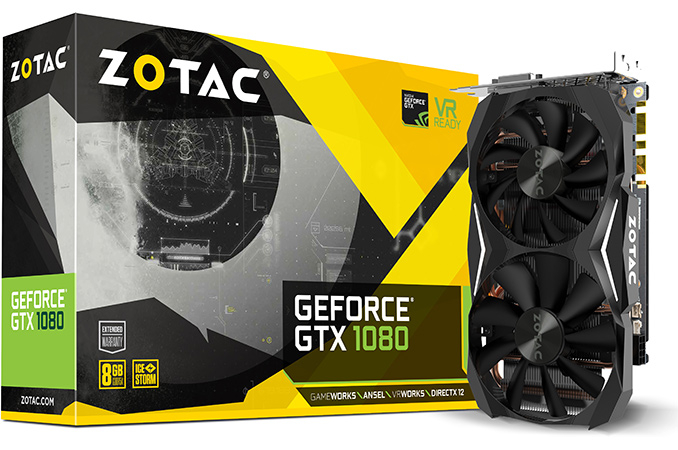
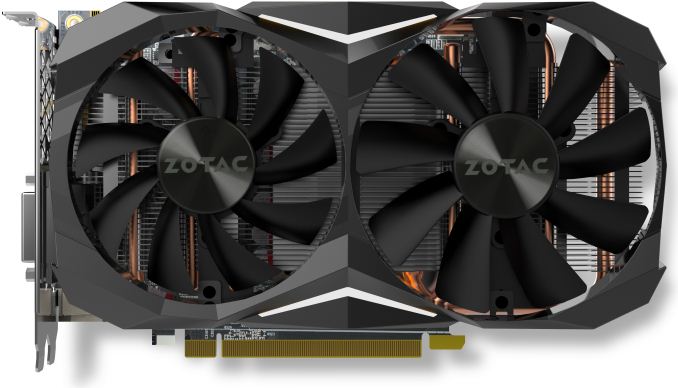
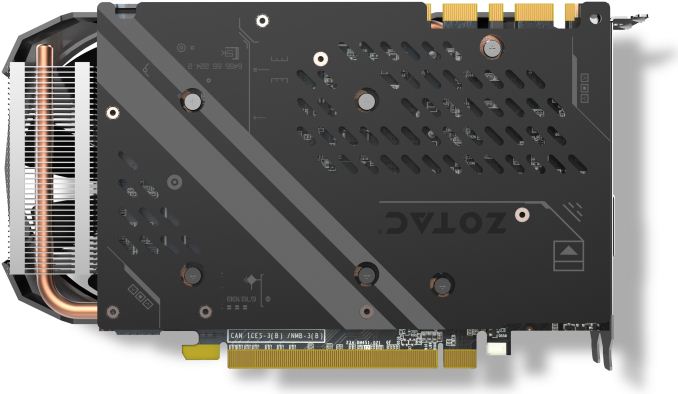
















Bookmarks